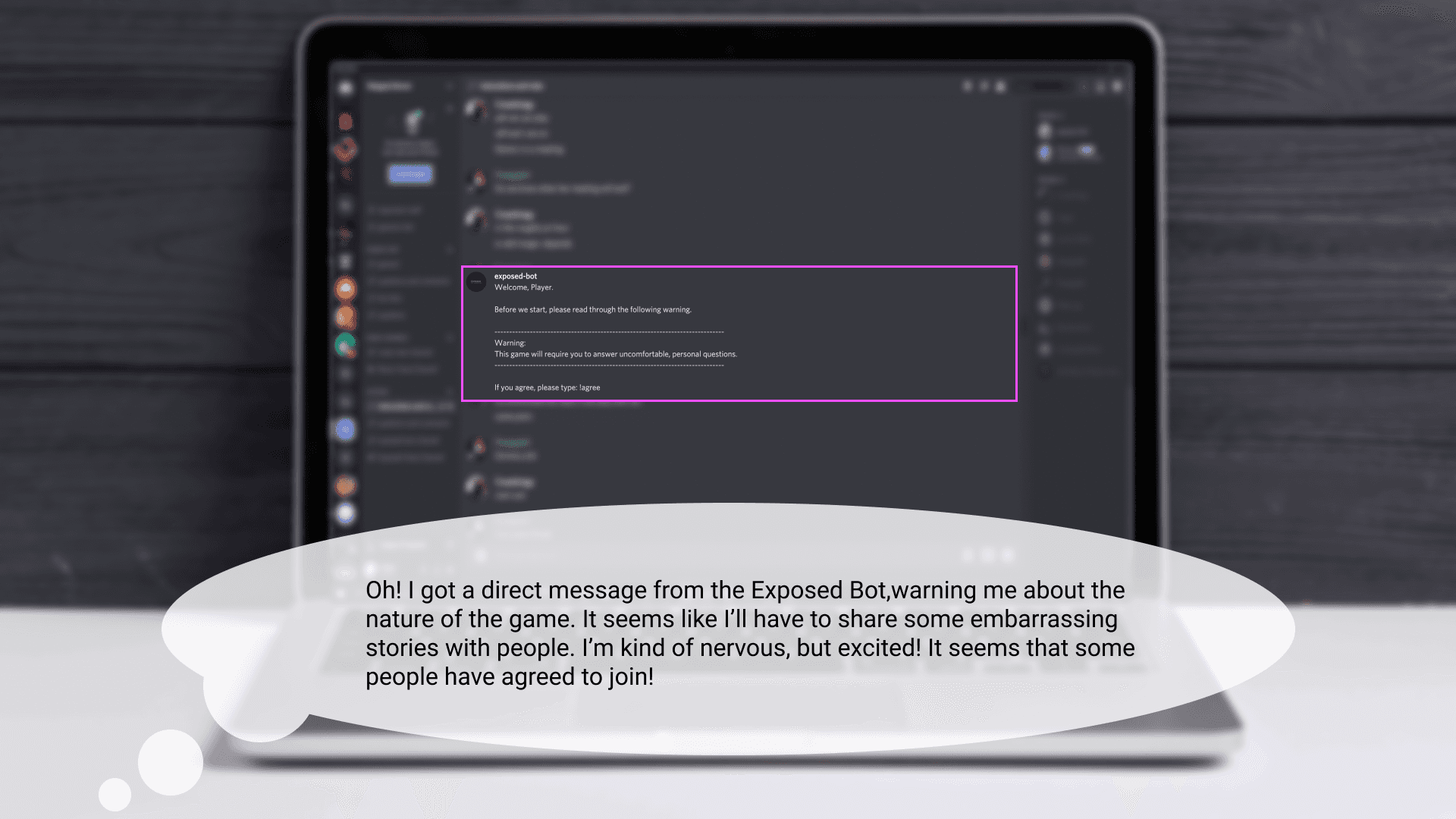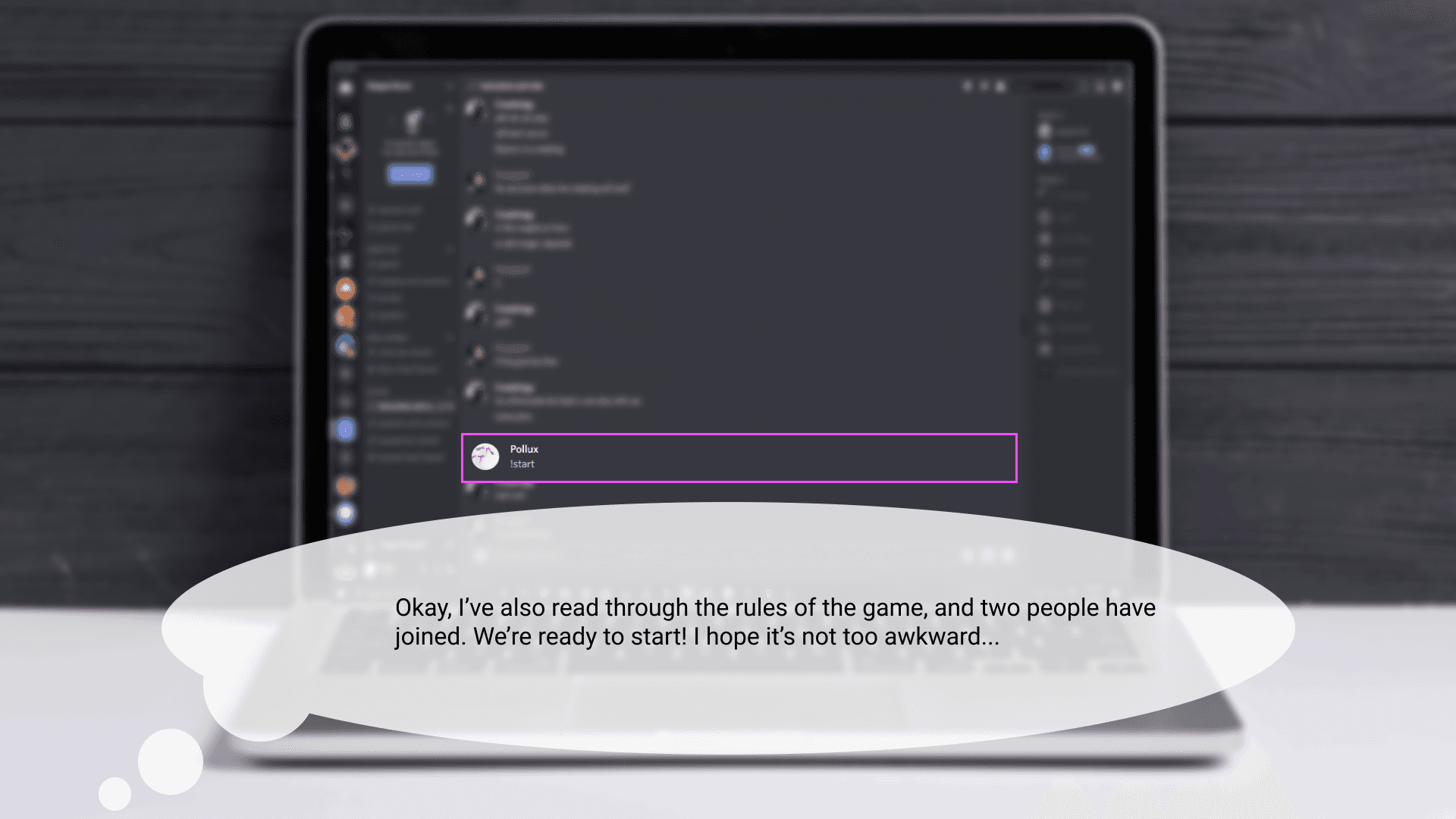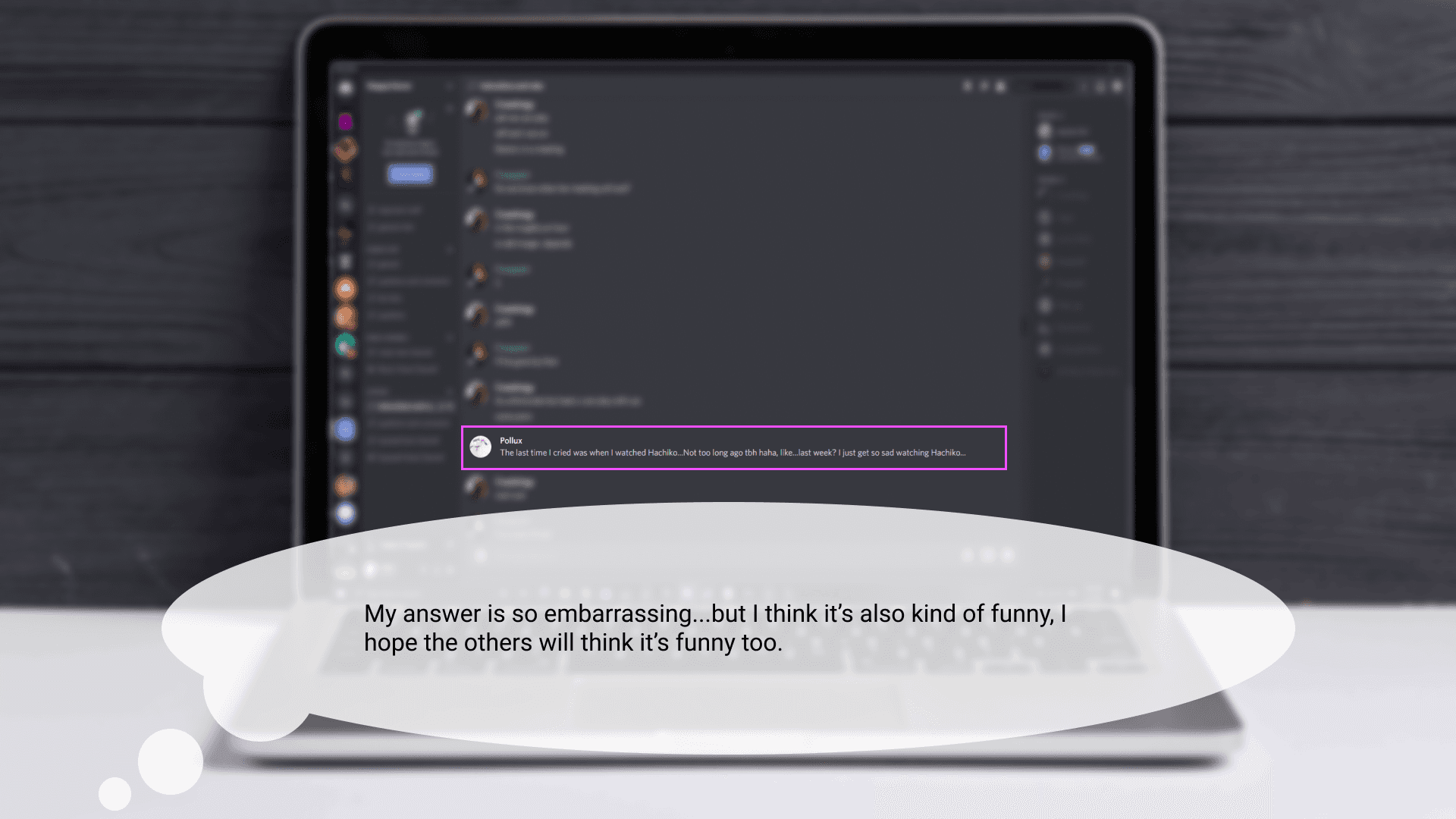Exposed
A Discord based game for fostering connection
Overview
Exposed is a discord based game that allows players to get to know each other and make genuine connections through embarrassing, personal and exposing questions.
Demo Video
Initial Concept + Design
Starting off with a concept to disrupt and intervene in the digital space, this game was initially designed to make people feel uncomfortable.
The aim of the design was to act as a facilitator for people to get to know each other by "forcing" people to get uncomfortable and vulnerable with each other through exposing personal preferences and experiences with each other.
Research + Process
First Iteration: Rewards & Punishment
In order to understand how the game might be played and how it might be effective in its intention, the first prototype of the game was a wizard-of-oz-ed version in which I played the part of the Discord bot, and conducted a play test with a group of players.
Because the intention of the game was to make players feel uncomfortable and foster connection through intentionally asking vulnerable and embarrassing questions, before joining the game, each player was informed of the rules. Additionally, each player was asked to confirm their consent to playing the game.
Key Takeaways:
Might be too uncomfortable for some players when playing with strangers.
Reward and punishment system was fun, but added additional pressure for players.
Discussion of answers was not explicitly encouraged, so players hoped that they could do so.
Second Iteration: Research & Emotional Prototype
Research was conducted through outreach to members of relatively high traffic discord servers, and discord users that were experienced in moderating servers as well. Due to time constraints, thorough play tests and interviews of all the people I reached out to were not possible, but I was able to create an emotional prototype that I deployed to a few testers.
Key Findings
Game might be better as an icebreaker, and also a way for people to make genuine connections with each other.
Players hope to be able to continue the connections made outside of the game into real life.
Instead of being text based, players thought voice chat would make people feel more connected.
Final Concept
Key Highlights:
Rewards vs. punishments system removed to alleviate pressure from players, and to encourage more sharing in a slightly more relaxed setting.
In order to encourage discussion and foster connections, players are encouraged to positively react to other players answers, and talk about their experiences as well.
Playing the game is moderated through a discord bot in a text channel, but players are in a voice channel for the game so that they can answer questions while talking, encouraging more connection and discussions.
Conclusion + Reflection
Conclusion
With the help of a friend, I was able to successfully deploy the designed game into discord as a bot, and was able to play test the final prototype that allowed players to play the core loop of the game. Based on feedback, in the future it may be possible to turn the discord bot into a standalone application that people could use and integrate into communication services not exclusive to Discord, such as Slack.
Additionally, if players could submit questions of their own, it would allow the game to have a larger, more diverse selection of questions to ask players.
Reflection
An important highlight of this project was the UX research that I conducted throughout the entire process. I was able to reach out to strangers on different discord servers, and gather insight on creating connections through a digital space, which also required me to step out of the comfort zone of performing UX research on my colleagues and friends.
Another lesson learned through the project was the use of prototypes that could efficiently gather information through testing, rather than focusing on a "completed" prototype. During this project, both an emotional prototype and a wizard-of-oz-ed version of the game were used to conduct quick and efficient testing, rather than spending more time building a working "completed" prototype, so that different iterations and changes could be made throughout the process.

















